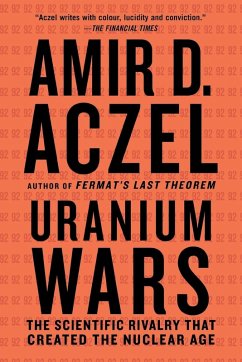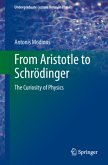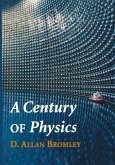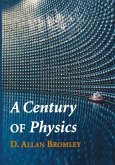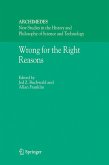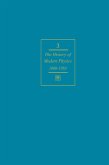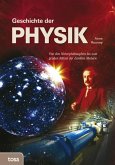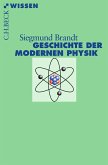The author of Fermat's Last Theorem tackles the cause of the last century's most destructive event - the discovery of nuclear power. Aczel presents the fascinating story of the rival scientists who uncovered uranium's potential and reveals the ongoing tale of an element that is never far from today's headlines.
Published to great acclaim and glowing reviews, Aczel's fast-paced history of the race to discover nuclear power follows the day's most brilliant scientists on the eve of war. We watch as Marie Curie slips uranium into her pocket during her groundbreaking, and lethal, experiments on radioactivity, and follow Enrico Fermi on his clandestine flight to America where he is the first to harness the power of a nuclear reaction - on a racquetball court.
Aczel expertly guides us from this pivotal moment in history to today, where mounting nuclear weapons programs from Pakistan to Iran are prompting many, including Barack Obama, to fight for a new vision of uranium's future.
Uranium, a nondescript element when found in nature, in the past century has become more sought after than gold. Its nucleus is so heavy that it is highly unstable and radioactive. If broken apart, it unleashes the tremendous power within the atom - the most controversial type of energy ever discovered.
Set against the darkening shadow of World War II, Amir D. Aczel's suspenseful account tells the story of the fierce competition among the day's top scientists to harness nuclear power. The intensely driven Marie Curie identified radioactivity. The University of Berlin team of Otto Hahn and Lise Meitner - he an upright, politically conservative German chemist and she a soft-spoken Austrian Jewish theoretical physicist - achieved the most spectacular discoveries in fission. Curie's daughter, Irène Joliot-Curie, raced against Meitner and Hahn to break the secret of the splitting of the atom. As the war raged, Niels Bohr, a founder of modern physics, had a dramatic meeting with Werner Heisenberg, the German physicist in charge of the Nazi project to beat the Allies to the bomb. And finally, in 1942, Enrico Fermi, a prodigy from Rome who had fled the war to the United States, unleashed the first nuclear chain reaction in a racquetball court at the University of Chicago.
At a time when the world is again confronted with the perils of nuclear armament, Amir D. Aczel's absorbing story of a rivalry that changed the course of history is as thrilling and suspenseful as it is scientifically revelatory and newsworthy.
'The combination of clear, in-depth scientific explanation and outstanding research make this book the one you should grab.' - Discover
Hinweis: Dieser Artikel kann nur an eine deutsche Lieferadresse ausgeliefert werden.
Published to great acclaim and glowing reviews, Aczel's fast-paced history of the race to discover nuclear power follows the day's most brilliant scientists on the eve of war. We watch as Marie Curie slips uranium into her pocket during her groundbreaking, and lethal, experiments on radioactivity, and follow Enrico Fermi on his clandestine flight to America where he is the first to harness the power of a nuclear reaction - on a racquetball court.
Aczel expertly guides us from this pivotal moment in history to today, where mounting nuclear weapons programs from Pakistan to Iran are prompting many, including Barack Obama, to fight for a new vision of uranium's future.
Uranium, a nondescript element when found in nature, in the past century has become more sought after than gold. Its nucleus is so heavy that it is highly unstable and radioactive. If broken apart, it unleashes the tremendous power within the atom - the most controversial type of energy ever discovered.
Set against the darkening shadow of World War II, Amir D. Aczel's suspenseful account tells the story of the fierce competition among the day's top scientists to harness nuclear power. The intensely driven Marie Curie identified radioactivity. The University of Berlin team of Otto Hahn and Lise Meitner - he an upright, politically conservative German chemist and she a soft-spoken Austrian Jewish theoretical physicist - achieved the most spectacular discoveries in fission. Curie's daughter, Irène Joliot-Curie, raced against Meitner and Hahn to break the secret of the splitting of the atom. As the war raged, Niels Bohr, a founder of modern physics, had a dramatic meeting with Werner Heisenberg, the German physicist in charge of the Nazi project to beat the Allies to the bomb. And finally, in 1942, Enrico Fermi, a prodigy from Rome who had fled the war to the United States, unleashed the first nuclear chain reaction in a racquetball court at the University of Chicago.
At a time when the world is again confronted with the perils of nuclear armament, Amir D. Aczel's absorbing story of a rivalry that changed the course of history is as thrilling and suspenseful as it is scientifically revelatory and newsworthy.
'The combination of clear, in-depth scientific explanation and outstanding research make this book the one you should grab.' - Discover
Hinweis: Dieser Artikel kann nur an eine deutsche Lieferadresse ausgeliefert werden.

